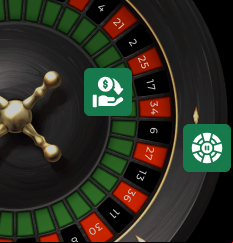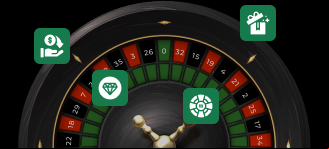Hoes Does the Labouchere System Work?
To clarify, although many people consider it a betting strategy, we’ll be referring to it as the Labouchere system because, although most widely used for roulette, it’s actually a mathematical system.
The Labouchere system differs from other betting strategies in that it aims to recoup losses incrementally instead of all at once. It operates in cycles with the objective of achieving a pre-determined profit margin. To use this system, the player should first establish a desired profit that they aim to achieve during one cycle. The following step is to write down a sequence of positive numbers that sum up to that target. For instance, if the target profit for a cycle is AU$6, an appropriate progression could be 1, 2, and 3.
The stake for each bet is determined by the sum of the first and last numbers on the list. With a target profit of AU$6 and using the example progression of 1, 2, and 3, the initial wager would be AU$4 (1+3). If the bet wins, the numbers 1 and 3 (the first and the last numbers from the list) are removed from the list. If the bet loses, the stake amount of the previous bet is added to the end of the list, making it 1, 2, 3, and 4 in our scenario. When only one number remains on the list, that is the amount of the next bet. Once all numbers are crossed off, the target profit has been reached and a new cycle can begin.
A few notes to consider when using the Labouchere system:
- All the wagers are placed on even money outside Roulette bets, such as Red/Black, Even/Odds, or High/Low.
- The player must define a short-term goal, which would be the amount they wish to win in a cycle.
- Write down a series of positive numbers that add up to the target profit amount you’ve defined.
- The initial bet would be the sum of the first and the last number on the list.
- If the bet wins, you should cross out the first and last numbers on the list, and continue with placing a bet that represents the sum of the first and last number remaining on the list.
- If the bet loses, add the losing wager amount to the end of the list, and repeat the process.
- The cycle is completed when all the numbers from the list have been crossed out. Then, you can start a new cycle.
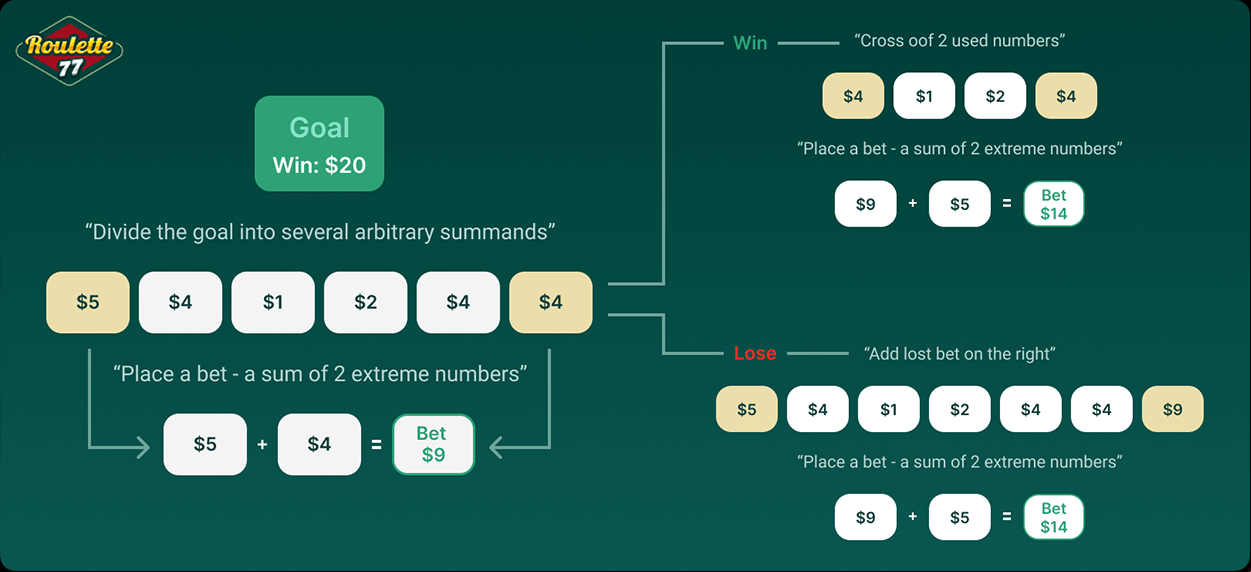
Here's an example of how the Labouchere system works in practice: we'll walk through a progression of 5 hypothetical spins. The first step is to establish a profit target and write down the corresponding progression. In this example, we'll set a goal of AU$10 and use the progression of 1, 2, 3, 4. To keep things straightforward, we'll also stick to betting on Red/Black.
- Step 1
The stake amount is determined by the sum of the first and last numbers on our list, in this case 1 and 4, so we bet AU$5. For the sake of our test, let’s say that the bet loses.
- Step 2
Since we lost AU$5 from the previous bet, we add the number 5 to the right end of our list of numbers. So, our progression now is 1, 2, 3, 4, 5, which means that we need to wager AU$6 (1+5) for our next bet. For the purpose of this test, let’s say we win this time.
- Step 3
Since we won our last bet, we should fross out the first and last numbers on our list - which is 1 and 5. That leaves our progression with the numbers 2, 3, and 4. We add the first and the last number (2+4) and wager AU$6. This bet loses.
- Step 4
We add the number 6 to the end of the list, so now our list is 2, 3, 4, 6. For our next bet, we add 2+6 and wager AU$8. The bet wins.
- Step 5
We remove 2 and 6 from the list, and we’re left with 3 and 4. We add 3+4, and wager AU$7. If the bet wins, the cycle is complete. If the best loses, we repeat the process.
Testing the Labouchere System for Roulette
To evaluate the Labouchere system, our computer experts employed Java Script and the following specifications:
- Four players will play European roulette
- Each player begins with AU$1,000 (representing 1000 units)
- The simulation will be conducted over 500 rounds
- Players 1 and 2 will set a target of AU$10 per cycle, using the progression of 1, 2, 1, 3, 1, 1, 1.
- Players 3 and 4 will set their targets at AU$15, using the progression of 1, 3, 4, 4, 3.
- The probabilities of winning and losing are 48.6% and 51.4%, respectively.
We’ll start with Player 1.
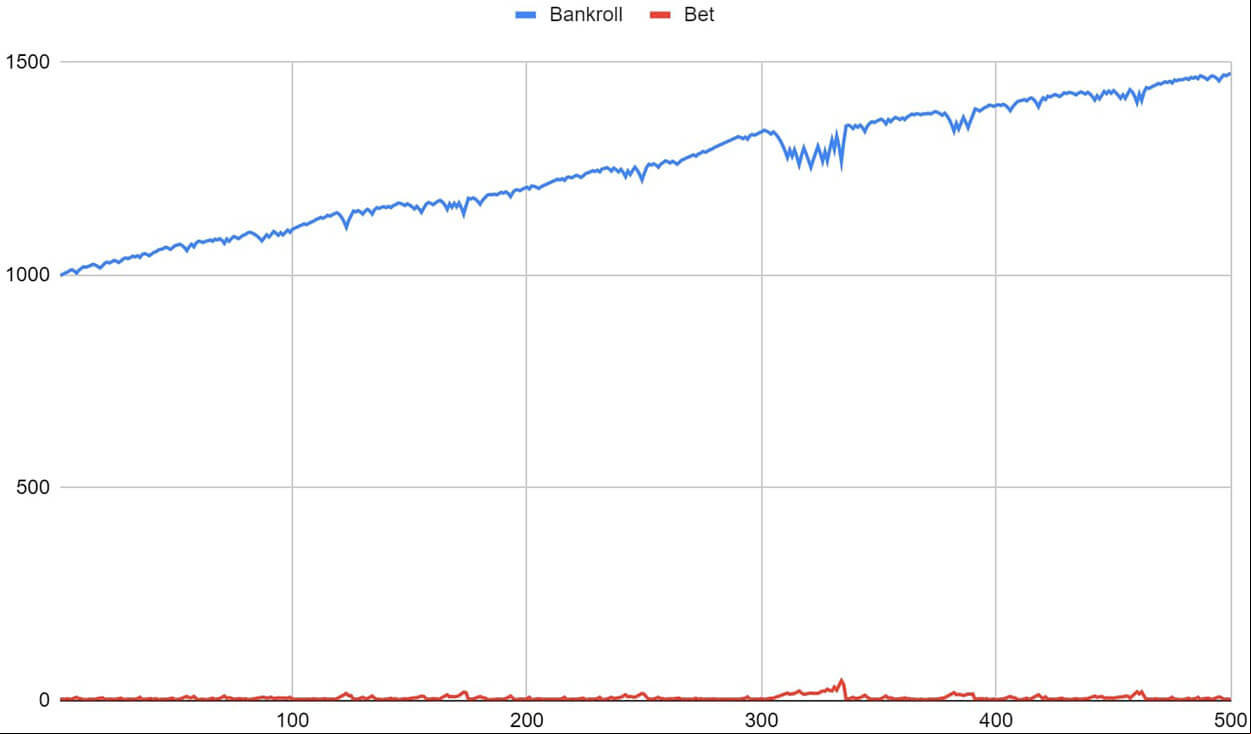
Player 1 had an ‘easy run’ and didn’t experience any sharp downturns - which can be seen from the graph. His max bet was AU$46. After the 500 rounds were complete, Player 1 finished with AU$474 in profit. The longest cycle that they experienced lasted 35 rounds.
Let’s see if Player 2 had a similar run.
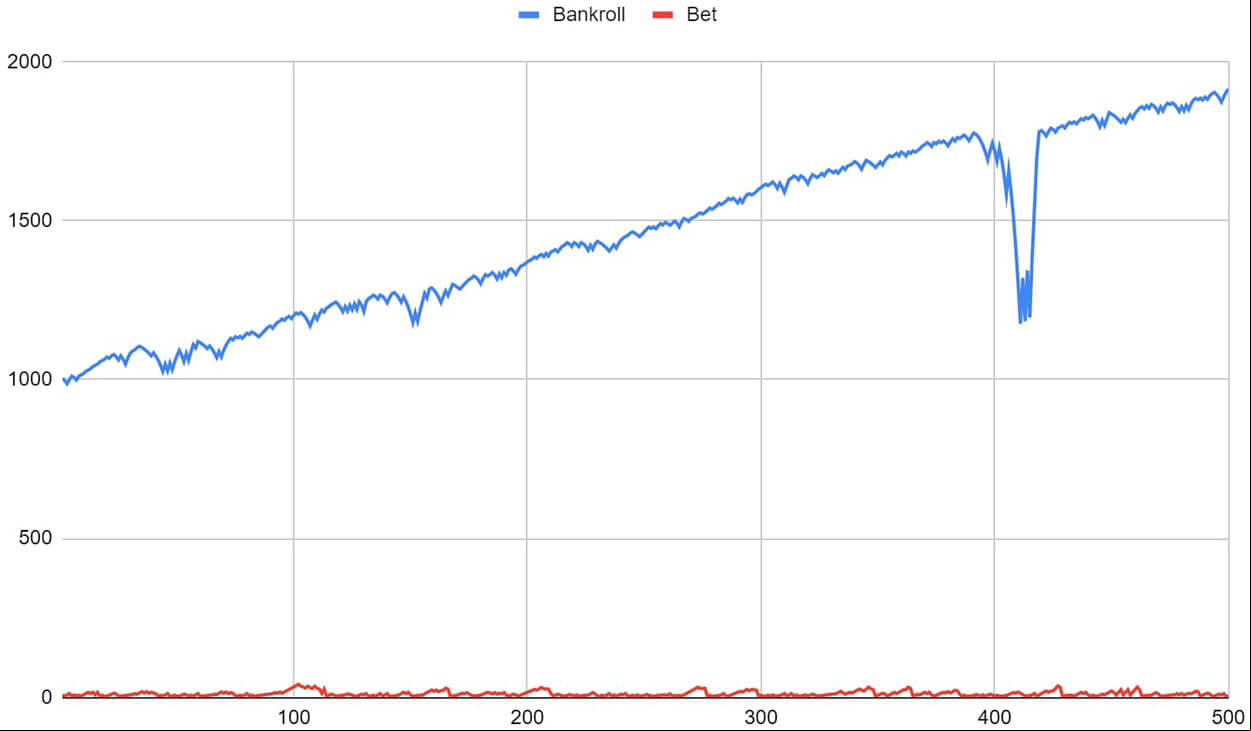
Although Player 2 also finished with a profit, they experienced a long session at one point, and one cycle lasted for 59 turns. At one point, Player 2 had t bet AU$199. Eventually, they ended up with a profit.
Let’s see how Player 3 did.
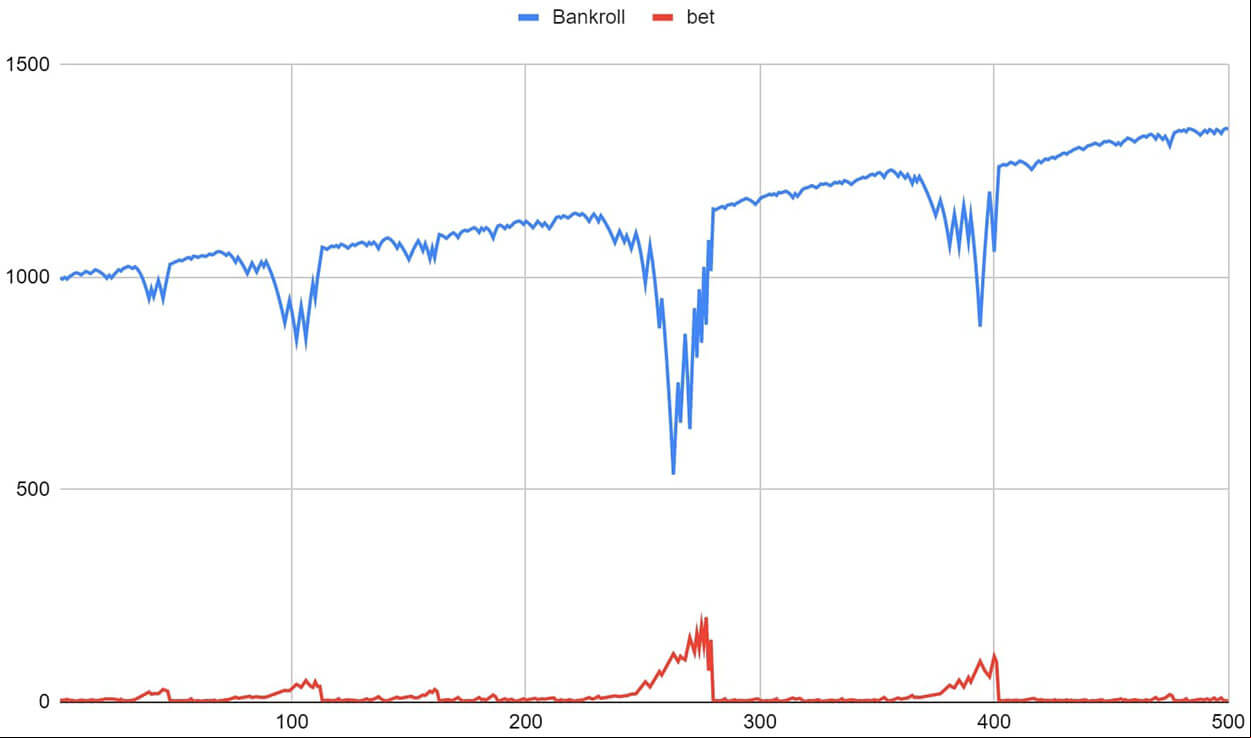
Player 3 had a very similar run to Player 1, with the only difference being that the cycle target was AU$15 this time. So, the bankroll grew faster, and Player 3 had to run through 56 cycles, with the longest one lasting 15 rounds and a maximum bet of AU$41. They eventually ended up with a profit of almost AU$900.

Player 4 had a more similar run to Player 2, getting ‘stuck’ in a long session after the 400th turn. The cycle lasted for 33 moves, and reached a maximum bet of AU$160 at one point. Eventually, Player 4 ended up in a profit as well.
Pitfalls Of Using The Labouchere System
As you can see from our test, the maximum iteration lengths for players 3 and 4 were 32 and 34 moves, respectively, and the drawdown peaks are significantly different. The reason for this is that player 3 experienced the following sequences of losses at the peak of the decline:
- 4,3,4,5,6,7,8,9,13,17,21
- 4,3,4,5,6,7,8,9,13,17,21,25
- 4,3,4,5,6,7,8,9,13,17,21,25,29
- 4,3,4,5,6,7,8,9,13,17,21,25,29,33
- 4,3,4,5,6,7,8,9,13,17,21,25,29,33,37
Let’s compare these numbers to the maximum iteration lengths for Player 4:
- 16,24,36,48,64
- 16,24,36,48,64,80
- 16,24,36,48,64,80,96
- 16,24,36,48,64,80,96,112
- 16,24,36,48,64,80,96,112,128
The biggest difference between Player 3 and Player 4 is that Player 4 had larger values of the , which means that the pitfall is not solely determined by the length of the iteration, but the number of components as well.
Overall, this strategy is not very risky - or at least not as risky as the Martingale strategy. Although moments of sharp subsidence can occur, the maximum wager in a single cycle in our test was AU$199. Yes, the bankroll can eventually go down, but the losses do not grow progressively. With a good initial bankroll, the player can easily compensate for the losses and come back. An iteration may take a long time, but it must end sooner or later - and it’s usually not very long.
An important factor to consider is that it’s not realistic to keep things in your mind when executing the Labouchere system, so you need to be very careful and write down all the rows separately. Also, you must to cross out the numbers and not make a mistake when adding the first and the last number of the list. Being a fast-paced game, this can be a bit problematic in roulette.
Final Verdict
Achieving consistent and realistic goals is crucial for success in roulette and other forms of gambling, and this is the core principle of the Labouchere roulette system as well.
From the graphs of the simulation results, it may appear that the Labouchere system is bulletproof, as each player ended the session with a profit, with the lowest being A$348 and the highest A$915. However, it's important to note that there were instances where a large number of losses put the bankrolls at risk, although these progressions were a lot less risky than the Martingale.
While the system can be recommended, it's advisable to have a bankroll of at least 1,000 units. Using Labouchere may make the game less exciting, but it can be useful for achieving short-term goals if you don't experience prolonged losing streaks.
You can have fun experimenting with the Labouchere roulette system, and you can try different progressions on any even-money bet. The bigger the goal, the faster your bankroll may grow, in theory.












